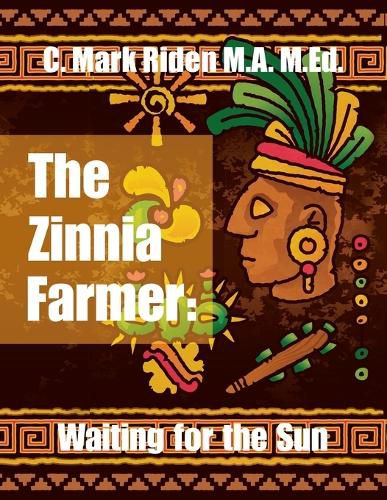Readings Newsletter
Become a Readings Member to make your shopping experience even easier.
Sign in or sign up for free!
You’re not far away from qualifying for FREE standard shipping within Australia
You’ve qualified for FREE standard shipping within Australia
The cart is loading…






This title is printed to order. This book may have been self-published. If so, we cannot guarantee the quality of the content. In the main most books will have gone through the editing process however some may not. We therefore suggest that you be aware of this before ordering this book. If in doubt check either the author or publisher’s details as we are unable to accept any returns unless they are faulty. Please contact us if you have any questions.
Native to Mexico and Central America, the Aztecs referred to the zinnia flower as an "eyesore" which the Spanish called mal de ojos because of their small, dingy and dull appearance in some colors (Hanna, 2013; Daily Gardener, 2019). Linnaeus classified zinnias in the family Asteraceae, a collage of 1620 genera and 23, 600 species (Petruzzellow, 2018). The Zinnia Farmer: Waiting for the Sun started out as a way to supplement my farm work in sowing, growing, collecting and identifying genetically dissimilar seed-types. In Native American culture, music had been closely connected to and intertwined with nature (Library of Congress & Appold, 2021). This belief served as a commensurate theme of the book. Words to songs, poems, and speeches attached themselves into our lives as if to explain some feeling or event we had experienced. The book opens with The Little Seed, a poem about a seedling with a mission: to grow strong, be beautiful, make people happy, and heal the earth. Chapter One blows the mind with color and symbolism and proves that zinnia flowers are incredibly beautiful given the right snapshot. Chapter Two features the pollinators, a ragtag army of grasshoppers, butterflies, bees, moths, and praying mantis that adorate zinnias. Some butterflies have wings that look amazingly like oriental dragon faces. With all this buzzing, something important is going down. Chapter Three highlights the perspicacious curiosities I have with disk and petal formation and color change. While zinnias exist in a variety of colors, none are blue and they don't emit a scent, at least not available to a human nose. The book includes the philosophy of Cicero and concludes with a speech made by the great orator Paul Harvey to the Future Farmers of America (FFA).
$9.00 standard shipping within Australia
FREE standard shipping within Australia for orders over $100.00
Express & International shipping calculated at checkout
This title is printed to order. This book may have been self-published. If so, we cannot guarantee the quality of the content. In the main most books will have gone through the editing process however some may not. We therefore suggest that you be aware of this before ordering this book. If in doubt check either the author or publisher’s details as we are unable to accept any returns unless they are faulty. Please contact us if you have any questions.
Native to Mexico and Central America, the Aztecs referred to the zinnia flower as an "eyesore" which the Spanish called mal de ojos because of their small, dingy and dull appearance in some colors (Hanna, 2013; Daily Gardener, 2019). Linnaeus classified zinnias in the family Asteraceae, a collage of 1620 genera and 23, 600 species (Petruzzellow, 2018). The Zinnia Farmer: Waiting for the Sun started out as a way to supplement my farm work in sowing, growing, collecting and identifying genetically dissimilar seed-types. In Native American culture, music had been closely connected to and intertwined with nature (Library of Congress & Appold, 2021). This belief served as a commensurate theme of the book. Words to songs, poems, and speeches attached themselves into our lives as if to explain some feeling or event we had experienced. The book opens with The Little Seed, a poem about a seedling with a mission: to grow strong, be beautiful, make people happy, and heal the earth. Chapter One blows the mind with color and symbolism and proves that zinnia flowers are incredibly beautiful given the right snapshot. Chapter Two features the pollinators, a ragtag army of grasshoppers, butterflies, bees, moths, and praying mantis that adorate zinnias. Some butterflies have wings that look amazingly like oriental dragon faces. With all this buzzing, something important is going down. Chapter Three highlights the perspicacious curiosities I have with disk and petal formation and color change. While zinnias exist in a variety of colors, none are blue and they don't emit a scent, at least not available to a human nose. The book includes the philosophy of Cicero and concludes with a speech made by the great orator Paul Harvey to the Future Farmers of America (FFA).